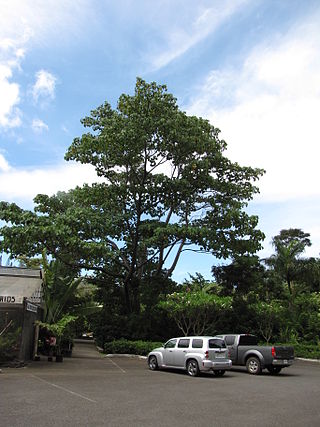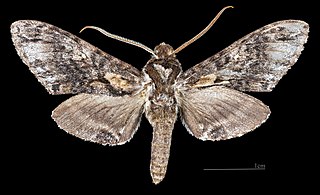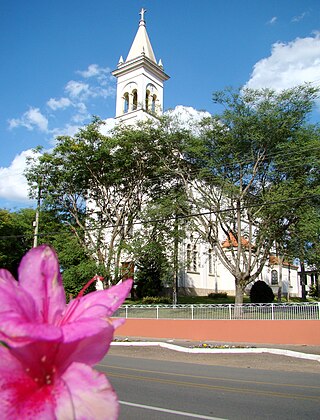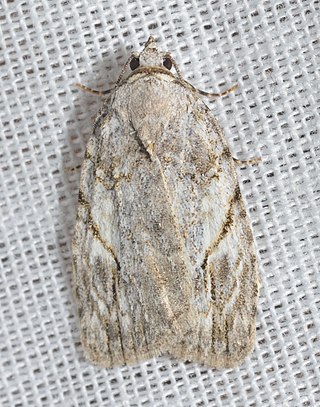| Balsa | |
|---|---|
 | |
| Balsa labecula | |
| Scientific classification | |
| Domain: | Eukaryota |
| Kingdom: | Animalia |
| Phylum: | Arthropoda |
| Class: | Insecta |
| Order: | Lepidoptera |
| Superfamily: | Noctuoidea |
| Family: | Noctuidae |
| Subfamily: | Balsinae |
| Genus: | Balsa Walker, 1860 |
| Balsa | |
|---|---|
 | |
| Balsa labecula | |
| Scientific classification | |
| Domain: | Eukaryota |
| Kingdom: | Animalia |
| Phylum: | Arthropoda |
| Class: | Insecta |
| Order: | Lepidoptera |
| Superfamily: | Noctuoidea |
| Family: | Noctuidae |
| Subfamily: | Balsinae |
| Genus: | Balsa Walker, 1860 |

Ochroma pyramidale, commonly known as the balsa tree, is a large, fast-growing tree native to the Americas. It is the sole member of the genus Ochroma. The tree is famous for its wide usage in woodworking, due to its softness and its high strength compared to its low density. The name balsa is the Spanish word for "raft."

The Pterophoridae or plume moths are a family of Lepidoptera with unusually modified wings, giving them the shape of a narrow winged airplane. Though they belong to the Apoditrysia like the larger moths and the butterflies, unlike these they are tiny and were formerly included among the assemblage called "microlepidoptera".

Balsa is a lightweight email client written in C for the GNOME desktop environment.
Balsas may refer to:

Balsas is a city in the state of Maranhão, northeast Brazil. It is located in southern Maranhão, 800 km from the capital of the state, São Luís.

Balsas is a canton in the Province of El Oro in Ecuador. The name of the canton is due to the abundant amount of balsa trees that existed in this area. The customs and traditions in Balsas are based on the influence brought by the first settlers from the Cantón Piñas, Zaruma, and part of the Province of Loja. Balsas is a privileged town, its location, natural resources, and economic conditions are unique conditions that have allowed it to aim towards development.
The Battle of Savra or the Battle of the Vjosë was fought on 18 September 1385 between Ottoman and much smaller Zetan forces, at the Savra field near Lushnjë. The Ottomans were invited by Karl Thopia to support him in his feud against Balša II.
Allen's woodrat is a species of rodent in the family Cricetidae. It is the only species in the genus Hodomys.

The Balsas screech owl is a species of owl in the family Strigidae. It is endemic to Mexico.
Ctenosaura clarki, commonly known as the Balsas armed lizard, Balsas spiny-tailed iguana, Michoacán dwarf spiny-tailed iguana, or nopiche, is a species of lizard in the family Iguanidae. The species native to Mexico.
Balsa is the tree Ochroma pyramidale or the light-weight wood it produces.

Quasimellana is a genus of skippers in the family Hesperiidae with a distribution in South America and southern North America.

Sphingini is a tribe of moths of the family Sphingidae. The tribe was described by Pierre André Latreille in 1802.

Nannoparce is a genus of moths in the family Sphingidae. The genus was erected by Walter Rothschild and Karl Jordan in 1903.

Balsa Nova is a municipality in the state of Paraná in the Southern Region of Brazil. It has a population of 13,092 and covers 348.926 square kilometres (134.721 sq mi). Balsa Nova borders the municipalities of Araucária, Campo Largo, Contenda, Lapa, Palmeira and Porto Amazonas, all in the east of the state of Paraná.

The Balsas River is a major river of south-central Mexico.
Balsa malana, the many-dotted appleworm, is a species of moth in the family Noctuidae. It is found in North America.

Balsa labecula, the white-blotched balsa, is a species of moth in the family Noctuidae. It is found in North America.

Xochiquetzallia is a genus of geophytic flowering plants of the subfamily Brodiaeoideae in the family Asparagaceae. The genus contains four species: three previously classified within the genus Dandya and one other previously classified within Milla. Earlier genetic and morphological research had shown that the broad Milla clade of plants is made up of two sister lineages. The four plant species now within Xochiquetzallia make up one of these lineages, and are more closely related to each other than they are to the second lineage, which is made up of the remaining Milla species, Dandya purpusii, and the genera Behria, Bessera, Jaimehintonia and Petronymphe. Jorge Gutiérrez and Teresa Terrazas, two of the botanists who worked on the earlier research, followed up in 2020 with a paper formally transferring the four species from Dandya and Milla to Xochiquetzallia.